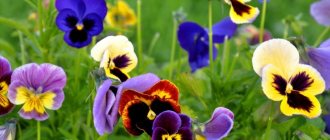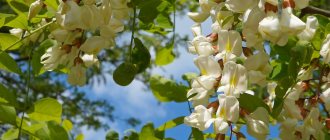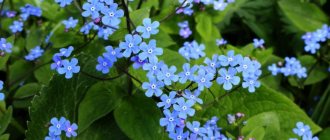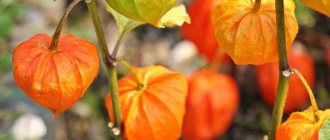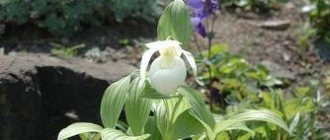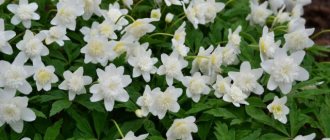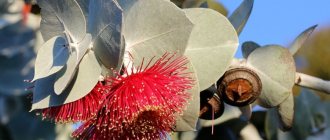According to statistics, this medicinal plant is one of the most commonly used remedies in folk and traditional medicine. Field chamomile is the most widespread plant throughout the Eastern European part of the globe. In Russia, these yellow-white flowers, reminiscent of the sun, can be found in any zone of the black earth strip. A bouquet of field daisies is a symbol of love and purity.
Collection, preparation and storage
Chamomile belongs to the annual herbaceous plants of the Asteraceae family. The flowering time for field chamomile is at the end of May and the beginning of September, it all depends on the geographical features of the flowering site. The flowers of the plant collected from May to September have the most valuable medicinal properties.
The collection of inflorescences must be carried out in dry, sunny weather. Under such conditions, field chamomile, the medicinal properties of which are determined by its chemical composition, is most suitable for harvesting raw materials. At the end of the day, just over 200 g of dry medicinal component is obtained from one kilogram of flowers.
As the experience of previous generations shows, field chamomile can be stored under proper conditions for about one and a half years. The storage conditions for the drug are the simplest. Glass or paper and cardboard containers will be an excellent storage for wildflowers. The main condition is a dry and dark place.
Varieties
Chamomiles are wild flowers that come in many varieties. They differ in names, appearance, description of properties.
Lugovaya
This plant is also called common cornflower. It reaches 1 m in height. At the same time, the flowers can be 7 cm in diameter. In the middle of the flower there is a yellow center. The petals are elongated and white in color.
This variety is often used by gardeners to decorate gardens and create landscape compositions.
Meadow chamomile is quite large in size.
Lesnaya
This type of flower is characterized by a pronounced aroma. Forest daisies have an attractive appearance, white elongated petals and a yellow center. The height of the plant reaches 30 cm.
The crop can be propagated by seed or by dividing the rhizome.
Pharmacy
The stem of the plant is 50 cm high. Chamomile boasts small leaves. All plants of this species bloom at the same time, which helps to obtain a flowering carpet.
This group includes a number of chamomile varieties:
- southern;
- Caucasian;
- golden;
- rough-fruited.
A distinctive feature of the culture is its distinct aroma. It is exuded not only by flowers, but also by leaves.
Chamomile contains a number of useful components.
Small field
Small field chamomile is a common plant that belongs to the Asteraceae family. The culture is most often found in gardens, fields and flower beds. The height of the bushes usually does not exceed 40 cm.
The plant is a perennial. It is often used in medicine, cooking, and cosmetology.
Flowering begins in the first half of June and continues until frost. The culture is characterized by high frost resistance.
Field chamomile: beneficial properties of the plant
The healing components of this plant can replace a whole list of medications in a home medicine cabinet. By the way, the main ingredient in pharmacological compositions of drugs is field chamomile. Here is an incomplete list of beneficial substances contained in a common wildflower:
- coumarins;
- flavonoids;
- essential oils;
- salicylic, caprylic and anthemisic organic acids;
- tannins, protein and mucilage compounds;
- gum;
- multivitamins;
- phytosterols and many other medicinal components.
In dried form, field chamomile contains up to 1% chamomile oil. This component is widely used in the cosmetics industry.
What does yellow field chamomile cure?
The preparation of various healing infusions and decoctions based on this plant is very common in folk medicine. For fans of herbal medicine and home treatment, field chamomile remains the main ingredient. The beneficial properties of the plant contribute to the treatment of many diseases and ailments:
- colds;
- migraine;
- diseases of the gastrointestinal tract;
- skin inflammation and so on.
Due to the fact that the plant contains essential oil, which has disinfectant properties that have a beneficial effect on the mucous membrane, many diseases of the digestive system are treated with preparations and remedies made from field chamomile.
However, doctors warn that the treatment may be unsafe. This is important to know for those people who suffer from allergic diseases. For this category of citizens, the best solution would be to consult a qualified specialist.
Botanical description
The name of the flower in Latin is “Camomille Matricaria”, the family to which chamomile belongs is Asteraceae or Asteraceae, class Dicotyledons. Common Chamomile has the following botanical description:
- stem - straight, branches into several branches at the base, stem height 15-50 cm;
- the root system is taproot, penetration depth into the soil is up to 50 cm;
- the leaves are lanceolate-shaped, divided into lobes, the color of the leaf blades varies from light tones to richly dark shades of green;
- inflorescences are represented by a hemispherical basket, the receptacle is conical;
- the baskets are composed of false-lingulate flowers of yellow and white color;
- The fruit of the plant is an oblong achene with no tuft.
Chamomile is a perennial plant, native to South Africa, Eurasia and America.
The Latin name "Matricaria", which translates as "uterus", was given to chamomile because it was used to treat diseases of the female reproductive system, especially to treat pathologies of the uterus.
Traditional medicine recipes
There are a large number of folk remedies using chamomile. Here are some healing recipes:
- For diarrhea, intestinal and stomach colic, as well as for various spasms of the gastrointestinal tract and gastritis, the following recipe is used. Pour 1-2 teaspoons of dry chamomile into a glass of water and leave for 15 minutes. Take this decoction one tablespoon 3 times a day. The course of treatment lasts one week.
- For a sore throat, the following recipe will be very effective. Mix two teaspoons of dry chamomile and linden blossom and pour 500 ml of boiling water. Leave for no more than 30 minutes. Strain the broth and gargle 3-4 times a day.
- For arthritis and arthrosis, rheumatism of the joints, to relieve heaviness and pain, baths with chamomile decoction are an excellent remedy. Pour 200 g of raw material with 3 liters of water. Bring this entire liquid mass to a boil over low heat, then pour into a container. Carry out the procedure for 15-20 minutes.
Growing on site
Unlike many types of medicinal plants, Chamomile is not capricious at all. But in order to get more flower baskets, some subtleties should be remembered. The plant prefers light, sandy to medium loamy soils that are not prone to crust formation. The soil is dug up and rhizomatous and root-producing perennial weeds are carefully selected. Add 1-2 buckets per 1 m2 of compost or rotted manure. Depending on the soil fertility on the site, you can apply 20-30 g/m2 of nitrogen, phosphorus and potassium fertilizers. After this, during winter or sub-winter sowing, the area is carefully leveled.
Reproduction
Chamomile has very small seeds, and for them to germinate successfully they must be sown very shallowly. When sowing in spring, the soil is leveled and lightly compacted with a stick or the edge of the palm in the grooves. The timing of winter sowing in the Non-Chernozem Zone is from August 10 to 20, and in more southern regions - until September 10. Before winter, they are sown 7-10 days before the onset of stable cold weather, that is, in late October - early November. In spring, sowing is carried out as early as possible. Before sowing, the seeds can be mixed with dry sand in a ratio of 1:3-4. This will allow the seeds to be sown more evenly. For winter and spring sowing, the seeds are planted in the soil no deeper than 0.5 cm. For winter sowing, they are not covered with soil at all. The distance between the rows is 45-60 cm. 0.5 g of seeds are needed per 1 m2 of area (without sand!). Of the listed dates, winter is probably the best. Firstly, at this time there is not as much work on the site as in the spring. Secondly, plants that have overwintered in the rosette phase are already in the spring ready to make maximum use of spring moisture reserves in the soil. And given the very dry first half of summer in recent years, this is important. The harvest of inflorescences during winter sowing is greater, and the inflorescences themselves are much larger - a pleasure to collect.
Chamomile,
peeled
Care
Maintenance is very simple - weeding and loosening. Watering is advisable. The collection of flowers begins as they bloom. In order to stock up on seeds for next year, some part of the plants is left, and when the baskets take on a conical shape, they are cut off and laid out on paper. When the baskets are dry, the seeds are threshed and sifted through a sieve. At home, it is quite difficult to completely clear the seeds from the remains of flowers, but this is not necessary. This will not affect the sowing quality of the seeds in any way. Only the seeding rate should be 2-3 times higher. The shelf life of seeds is about 2 years.
Chamomile for weight loss
Thanks to its disinfectant and antiseptic substances that act on the secretions of the gastrointestinal tract, chamomile remains one of the effective means for weight loss. Chamomile tea helps in the fight against excess weight, which anyone can drink without harm to health. Two tablespoons of medicinal raw materials are brewed like regular tea. This drink not only helps you lose weight, but also makes your body rejuvenate.
Colors
Representatives of different varieties differ not only in size, but also in the shades of inflorescences. Their color range is very wide and varied.
- All varieties of cornflower or gigantic chamomile, as it is also called, have a white inflorescence . The bright yellow center is surrounded by white petals, varying in shape and number for each variety.
- Brightly colored inflorescences are found among pyrethrums. The yellow core rises above a rosette of large leaves surrounded by petals (reed flowers) of white, hot pink, crimson, lilac, purple, red and even burgundy.
- Doronicum is characterized by yellow inflorescences. The shades of reed flowers vary from lemon yellow to orange.
- Antemis or navel tincture has characteristic bright yellow inflorescences.
The bright and varied palette of garden daisies allows every gardener to choose a variety of almost any shade.
Chamomile for children
Even pediatricians today recommend bathing children, including infants, in chamomile decoction. To do this, it is better to use dry chamomile purchased at a pharmacy. Such baths will benefit babies.
The anti-inflammatory and antibacterial properties of field chamomile will calm the child and relieve skin irritations. It is recommended to make chamomile infusions with a low concentration of dry plant. The most complete consultation can be obtained from a pediatrician. For children under five years of age, decoctions of chamomile for internal use are strictly prohibited.
origin of name
In the ancient world, the chamomile plant was known as chamaemelon, which translated from ancient Greek means “earth apple.” Chamomile was so named due to the aroma of its flowers, reminiscent of the smell of apples. In medieval Europe, the plant was called chamaemelon romana, the second word indicating the ancient Roman origin of the name.
In Russian, romana was transformed into “novel”, “romannik”, “romanov color”. By the end of the 18th century, the diminutive form of these names, “chamomile,” became widespread.
The scientific name Matricaria chamomilla was assigned to the plant in the 18th century. A doctor and botanist from Switzerland, Albrecht von Haller, decided to name one of the genera of the Asteraceae family - Matricaria, taking as a basis the Latin name for the uterus - matrix.
This word was not chosen by chance, because a close relative of chamomile, non-odorous chamomile, has long been used to treat gynecological diseases. Subsequently, three-rib was isolated into a separate genus, and the name that appeared, thanks to it, went to the genus of the Astrov family, to which chamomile belongs.
The specific name chamomilla was introduced into the botanical classification by the Swedish botanist Carl Linnaeus, taking the Latin name chamaemelon as a basis.
Contraindications
Doctors categorically do not recommend that pregnant women take any decoctions or tinctures of chamomile. The thing is that wildflower can stimulate the production of estrogen. For a successful pregnancy, the amount of estrogen in the ovaries should not exceed the norm.
Otherwise, this can negatively affect the course of pregnancy, sometimes leading to its early termination. It should also be taken into account that uncontrolled use of medicines based on field chamomile can lead to attacks of headaches and vomiting. When treating eye diseases, chamomile infusions should be used only after consultation with an ophthalmologist.
Diseases and pests - methods of combating them
Diseases to which chamomiles are susceptible if not properly cared for:
- Fusarium is a fungus that causes root rot. Signs - tissues become brown, shoots become thinner and weaker.
- Powdery mildew is the appearance of a white coating on a flower, which gradually becomes brown.
- Gray rot is the formation of brown spots on leaf blades that rapidly increase in size. Gradually, the leaf part of the plant turns completely yellow.
- Rust is the appearance of dark yellow, dense spots on the foliage.
To treat chamomile diseases, fungicides are used - Kuproxat, Oxychom, Fundazol.
Preventing the occurrence of diseases - following the rules of watering, without waterlogging the soil, timely loosening the soil and weeding.
Insects:
- thrips, aphids - the appearance of light yellow spots on the leaf blades, the gradual death of the soft tissues of the plant;
- wireworms - damage the root system, leading to the death of the entire bush;
- star-winged fly - accumulates on the middle flowers, sucking the juices from the plant.
Insecticides are used to get rid of insects. Measures to prevent the appearance of parasites include proper plant care, timely removal of weeds, preventive treatment with insecticides, otherwise the flower will not be able to grow strong and beautiful.
Diseases must be combated immediately when the first signs appear, otherwise the chamomile bush will quickly die
Interesting Facts
There are many songs, ditties, fairy tales and sayings about the field chamomile, a flower associated with Russian nature. In the old days, these plants were called navels because of their yellow navel. Field chamomile also had several names in Rus', all of them were invented by herbalists: roman herb, roman flower.
In Tibetan medicine, this plant is considered a miraculous remedy for rejuvenation. Chamomile tea is a cult attribute. Every day, the monks drink this healing drink before going to bed, keeping the secret of its preparation secret.
In nature, field chamomile is also a plant protector. If you plant chamomile seeds around an apple tree, then its fruits are not afraid of the codling moth. There will never be white moth and cabbage cutworm caterpillars in the garden if chamomile grows there.
Here it is, field chamomile!
Planting methods
In order to grow chamomile in the garden, no special material costs or troubles are required; even a novice gardener can easily cope with this task. However, it is necessary to take into account some nuances characteristic of one or another planting method:
- Chamomile is grown using seeds. Sowing is carried out either directly into open ground or seedlings are first grown and only then transferred to open ground.
- For seedlings, you will need trays with drainage holes, which must be filled with soil consisting of equal parts of peat and sand. The resulting substrate is moistened and chamomile seeds are placed in it, lightly sprinkling them. The plantings are covered with film and placed in a warm place. Shoots appear in about three weeks. After they appear, the shelter must be removed and the tray with seedlings placed on the windowsill, protected from drafts.
- When the seedlings reach 5 cm, they are examined and only the most developed ones are left. Rejected seedlings are not pulled out, but carefully pinched off at the surface of the soil. To form side shoots, the grown seedlings are pinched above the third leaf. Seedlings are planted in open ground towards the end of spring after the end of frost. The optimal temperature for planting is +16 C.
- After preparing the site, the seedlings are placed in pre-prepared holes at a distance of 20-40 cm from each other. The soil under the seedlings is slightly compacted and watered abundantly.
How to grow chamomile without loss is described in the video below.
